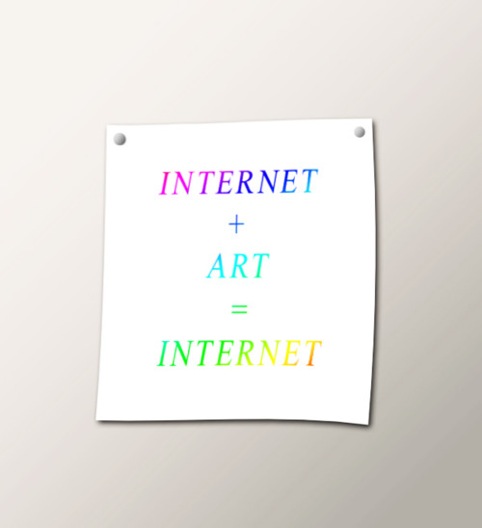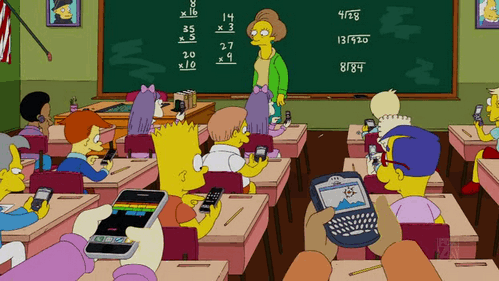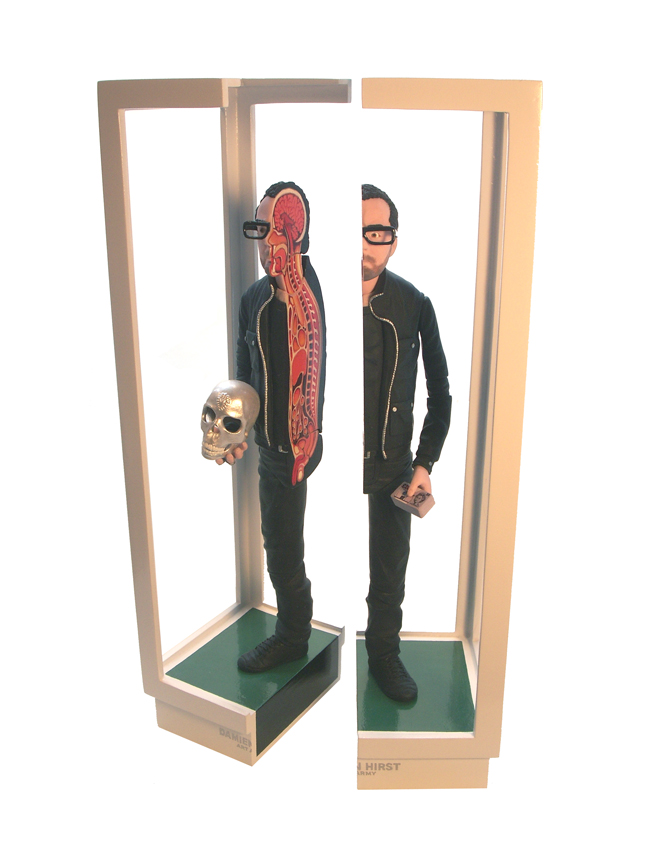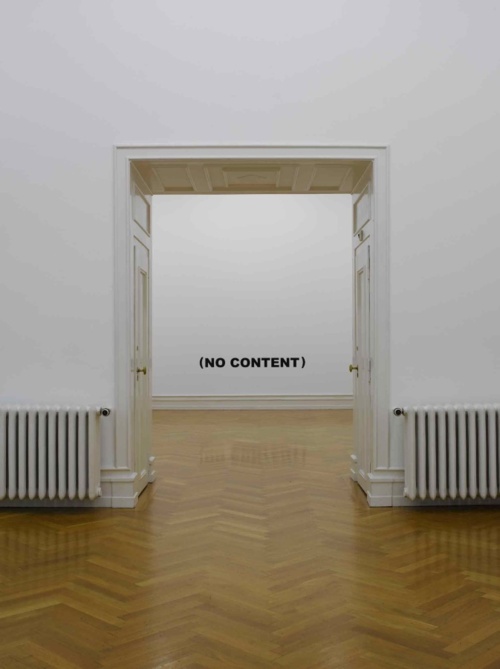The Analog Tele-Phonographer, a Mobile Phone Sound Amplifier
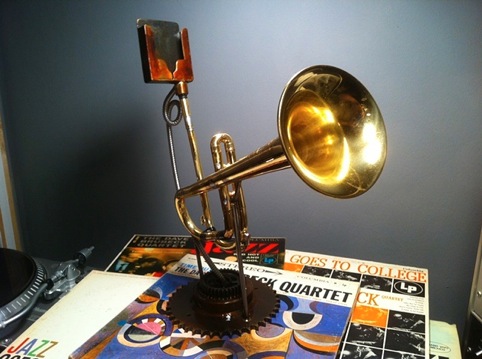
Christopher Locke created The Analog Tele-Phonographer, a mobile phone sound amplifier made using a broken trumpet:
This device was made from a salvaged trumpet and assorted machine parts. The base is steel, the legs that hold everything up are stainless steel, and the cradle that holds the telephone is also steel. The horn is brass. All of the steel has been treated with a brown patina, and the entire unit has been coated with a gloss clear coat.
(Via Laughing Squid)
Browser Abstract
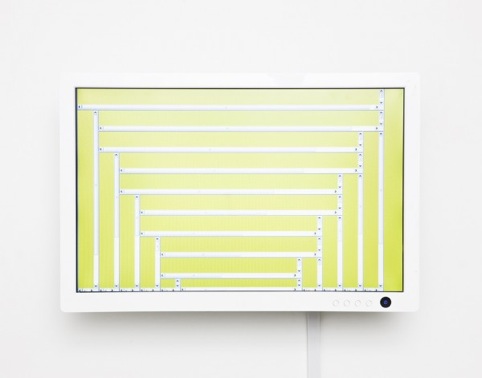
Kim Si Nae‘s Browser Abstract…
Citizens of the world are spending their lives staring into the reflective surfaces of their mobile phones and desktop computers. I think that social context determines the value of the media, tendency itself of dispaying medium have to be thought as social message.
For me, the digital canvas is another representation tool. Browser is not only the way it looks but also an inevitable basis of existence in the new space. If the history of fine art is against the frame of canvas, new painting will be founded on the browser, a element of being. In the past, inherent trait of painting reveals through the recognitions and enactments of medium. As the tool and matarial,we have to reconsider the new medium.’
(via i like this art)
Microworld
Microworld: William Shatners psychedelic 1976-Minidoc about Microprocessors
(Via Nerdcore)
Diorama map of New York
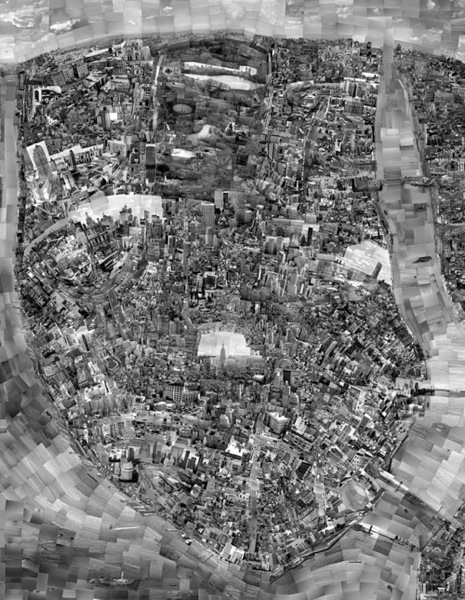
Japanese photographer Sohei Nishino walks around cities taking pictures and pasting and arranging the results to create layered icons of a city from his memory. He has mapped Istanbul, Hong Kong, Paris, New York, Shanghai, Tokyo, Hiroshima, Kyoto, Osaka and London.
(via Lustik)
Internet + Art = Internet
Lostinonetweet
Dynamite Karaoke
Let’s celebrate together with this awesome surreal karaoke videoart by Ben Coonley….
(Via Rhizome)
Sexy Sax Man Prank
No description would be accurate. You just have to click play…
Cathedral Scan
Blake Carrington turns Gothic cathedrals into sound:
“Groups of scanners filling the sonic spectrum may act in synch, forming a single harmonically-dense rhythm, or they may scan the plans at different speeds, resulting in complex polyrhythms. Each plan is treated as a modular score, with a distinct rhythm and timbre of its own. Also, by varying the speed and intensity of each scanning group, drone-like sounds may emerge based on the ‘resonant frequency’ of the black and white plan.”
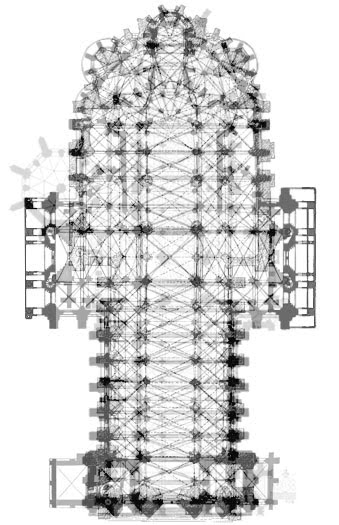
(Via BLDGBLOG)
Tough Times for Teachers
Bible Sculptures
Postcards from Google Earth
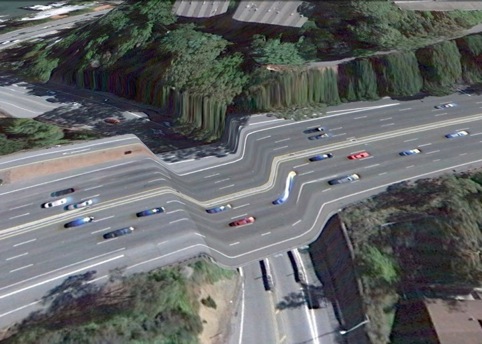
Postcards from Google Earth, by Clement Valla:
‘The images are screenshots from Google Earth with basic color adjustments and cropping. I am collecting these new typologies as a means of conservation – as Google Earth improves its 3D models, its terrain, and its satellite imagery, these strange, surrealist depictions of our built environment and its relation to the natural landscape will disappear in favor of better illusionistic imagery. However, I think these strange mappings of the 2-dimensional and the 3-dimensional provide us with fabulous forms that are purely the result of algorithmic processes and not of human aesthetic decision making. They are artifacts worth preserving.’
Miniature paintings on microchips
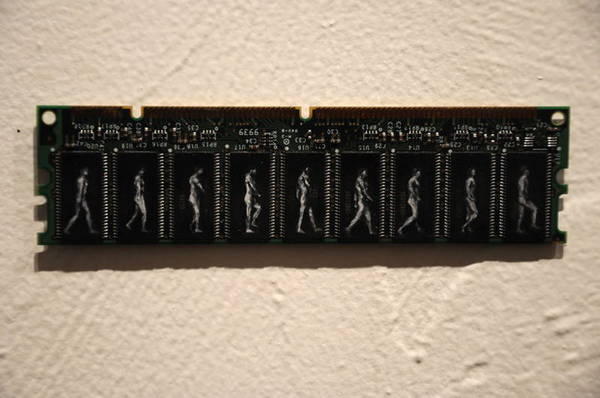
Yuri Zupancic says his microchip paintings are an homage to the tradition of miniature painting, informed by the “smaller and faster…catchphrase of commodities.” He makes some of his brushes from his own eyelashes.
The Art Army by Mike Leavitt
The Responsive Eye

Before Brian De Palma became a movie director he made documentaries. This one is called “The Responsive Eye” and chronicles the Museum Of Modern Art’s 1965 exhibition of Op-Art…
[via]
Cover Song Archive
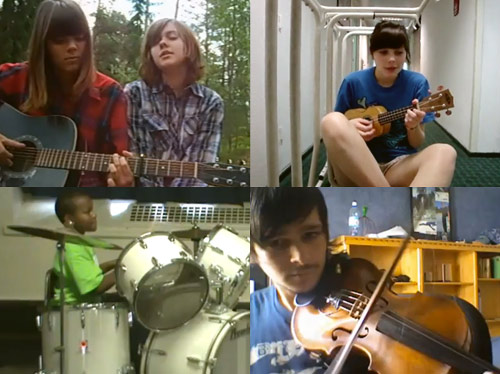
Boooooooom just launched a new project: the Cover Song Archive: famous songs covered by non-famous people. Sounds amazing…
Newstweek
Jeff Koons Must Die
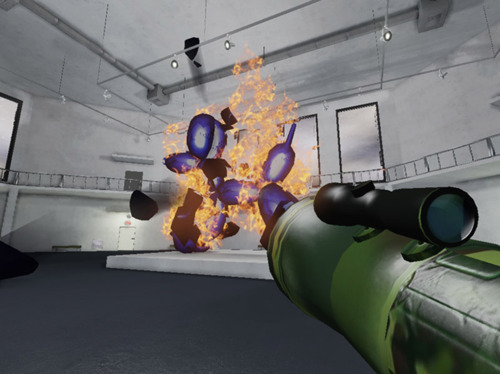
Hunter Jonakin’s video game Jeff Koons Must Die!!!
“Jeff Koons Must Die!!! is made up of a fabricated 80’s style stand-up arcade cabinet, and a simulated digital environment presented in a first-person perspective. Viewers must pay twenty-five cents to play the game and the virtual environment is traversed with a joystick and two arcade buttons. The premise of the video game is to allow the viewer to virtually destroy work by the artist, Jeff Koons.”
High Five

High Five, by Niko Princen…
[via]
Climbing
No content
Last Expo

Last Expo is a collection of photographs taken of orphaned art in its final resting place. It’s a commemorative album of forgotten human imagination.
The Stupid Orchestra
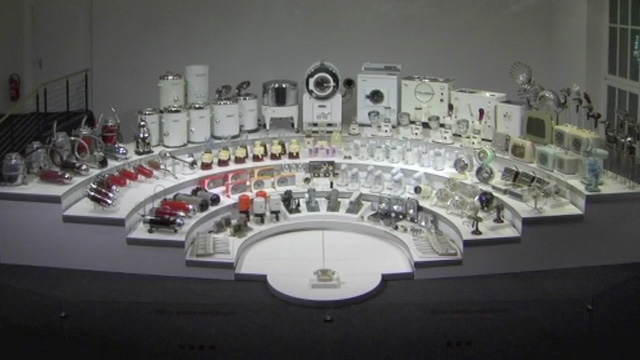
Michael Petermann arranged around 200 historic electric household appliances like a symphony orchestra and called it The Stupid Orchestra.
[via]
Finestre casuali sul mondo

E’ un po’ di tempo che mi gira in testa questa idea di Internet come strumento rivelatore della molteplicità del mondo. Navigando tra le pagine web, guardando i video di Youtube, viaggiando “virtualmente” con Google Earth o Street View, parlando con le persone nelle chat e nei forum, veniamo ogni giorno a contatto con una miriade di realtà differenti. Prendiamo continuamente coscienza dell’esistenza di nuovi luoghi, oggetti, comportamenti, estetiche, miti, narrazioni.
Quali siano le conseguenze di questo faccia a faccia continuo con un’infinita, vertiginosa, diversità, non è ancora chiaro, ma credo che saranno vaste e difficilmente controllabili.
Qualche giorno fa mi sono imbattuta in un gioco. Non si sa chi l’abbia inventato (più probabilmente, scoperto per caso), ma può giocarci chiunque, e rischia di intrappolarvi per delle ore. In cosa consiste?
Basta aprire Google e digitare: “inurl:”ViewerFrame?Mode=” -inurl -intitle”. Molti dei risultati portano a pagine web che contengono immagini trasmesse da telecamere di sorveglianza non protette. Può capitare di osservare un molo, una strada, l’atrio di un palazzo, un negozio deserto o un pappagallo in gabbia. Possiamo aprire finestre casuali sul mondo. In tempo reale.
Dopo il teletrasporto random tramite Street View, è il mio nuovo passatempo preferito.

